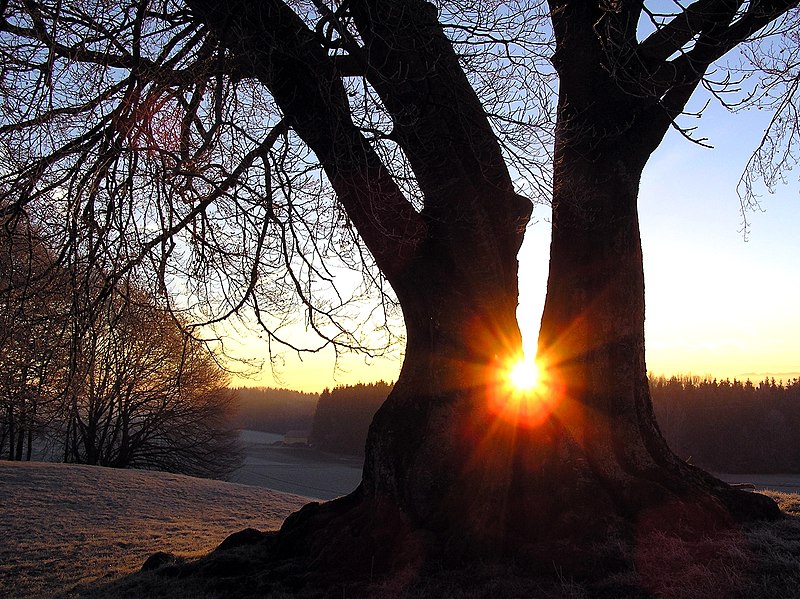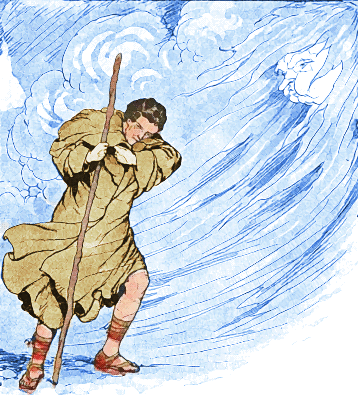I began working on
my meditation requirement in early October of 2013, and have
continued at least twice a week up until the time of this writing,
and I plan to continue doing so into the future as well. When I first
began trying to work on meditation, I unfortunately had a great deal
of difficulty with it. I downloaded a copy of Ian Corrigan's
recording of the Two Powers meditation, and for the first month tried
nearly every day to follow along with the meditation.
This turned out to
be an incredibly difficult task for me. Though the meditation itself
is just short of ten minutes, I found myself asleep before the end of
the meditation every single time
I attempted to work through it. This isn't to say that I didn't make
any strides – in fact, I experienced some definite growth and
changes during the first half or so of each attempt – but the
outcome was always the same. About the middle of October,
I began noticing that I could feel energy flowing within myself when
the meditation directed me to reach my roots down into the cool water
below the earth; I felt a cool tingling come up from my feet and
spread across my whole body. Likewise, when I reached my branches to
the sun, I could feel the warm sunlight, and its warmth suffused
through me and mixed with the cool tingly energy just as the
meditation described. Unfortunately, I don't think I have ever
gotten beyond this mixing point when listening to the Two Powers.
This
continued on for another month or so, each time failing to even make
it through to the end of the meditation. After awhile, I posted on
the ADF facebook page,
begging for help figuring out my problem. I was getting incredibly
discouraged – I know the point of the DP is to at least try
a variety of things, but I felt as if my attempts were getting me
absolutely nowhere. I'd discovered a great way to get myself to sleep
at night if I was having trouble with insomnia, but I wanted to go
deeper and discover more.
On
the facebook page, a few different ideas were presented that I decided to try
out. The idea I liked the most was a walking meditation, but
unfortunately by that time of year it was much too cold outside for
me to comfortably walk about for more than a few minutes. So I began
another form of moving meditation: I returned to doing a Sun
Salutation morning devotional, this time with a focus on clearing my
mind as I moved through the yoga poses. I practiced this meditation
almost every morning for six
months, and I did enjoy it, but it wasn't quite the traditional sort
of blank-mind meditation that I suppose I had in mind when I set out
to learn to meditate. Once spring came again, I decided
to try out some of the warmer-weather ideas.
The first was a walking meditation, which actually turned out to not
work for me at all. Continuing to do my sun salutations, so I could
actually have some productive mental discipline time, I added a walk
in the afternoon when I could have some time without my children. I
found the actual act of walking calming in the same way that my yoga
in the morning was, but unfortunately there were way too many
distractions in my neighborhood – neighbors would say hi, family
(since we live in the same neighborhood as my in-laws and my
husband's aunt and uncle) would drive by and honk and wave, and
overall I found it the very opposite of peaceful to be constantly
jarred out of a meditative state. I think it might work better for me
to walk in the very early morning or in a different location, but I'm
not able to make that work with my children-limited schedule.
The second idea I tried was a focused meditation – the idea is to
focus on a square of ground or some other part of nature and to let
one's thoughts quiet while contemplating it. This was something I had
a great deal of success with. I think having some visual input is
very helpful for me to stay awake; I am a fairly powerful visualizer,
but with my eyes closed and no one else around, the signals for sleep
are apparently just too strong. My usual practice involved climbing
up my backyard oak tree in the afternoon, putting my hands on the
trunk, and just studying that tiny patch of trunk or leaves. I did
not set a timer when doing this, because I only had action to an
old-fashioned ticking type which was often distracting. I found that
I usually was done in about half an hour, including time to climb up
and down the oak; so it's probably somewhere around 15 minutes of
actual meditation. Once I had realized how effective this was, after
about a week, I switched to this form instead of my morning yoga; and
began doing a simple version of the Core Order of Ritual as my
morning devotional instead.
Now that the weather is beginning to get colder again, I've been
driven back inside and can no longer climb trees in the afternoon.
Luckily, before it began to get cold, I attended the Midnight Flame
Festival and was able to attend Nick Egelhoff's workshop on different
types of meditation. I found a great affinity for a square breathing
meditation – where I breathe in for three, hold my breath for
three, exhale for three, and hold again for three more. Something
about the counting and the concentration that it requires from me is
very engaging, and I am able to clear my mind without it being so
unoccupied that I slip into sleep. It's not as lovely as meditating
in a tree, but it is very relaxing.
I
never have had as physical a reaction to meditation as I did when
feeling the energy in the Two Powers; that was a unique experience
that I don't think can be replicated with the simpler, less
visualization-heavy kinds of meditation that I've been trying since.
I find meditation very relaxing and calming, and it helps me deal
with the stress of the day. When I switched my meditation from
morning to afternoon, I did notice a change – but it was not a
drastic one, since I was still doing a morning devotional that was
calming and centering for me, though not exactly a meditation. I
found that doing something both in the morning and afternoon was
really helpful; it's the natural midpoint of my day when my children
are either asleep or at school, so I found it a great time to pause
and recharge, and it really increased my patience in the later half
of the day. I
also found it easier, after a few months of practice, to get into a
ritual mindset immediately at the start of a rite, which was very
helpful for me both in my solitary practice and as a leader of
ritual.
All
in all, beginning a meditation practice has been incredibly
beneficial to me, and honestly I wish I had started sooner. I
meditate almost every day, and have done so since beginning this
experiment, and it has enabled me become better at both concentration
and entering and staying in a ritual mindset. Once I tried something
new, and overcame the problem of falling asleep during meditation, it
became a powerful tool; one I will absolutely continue to practice.











.png)










